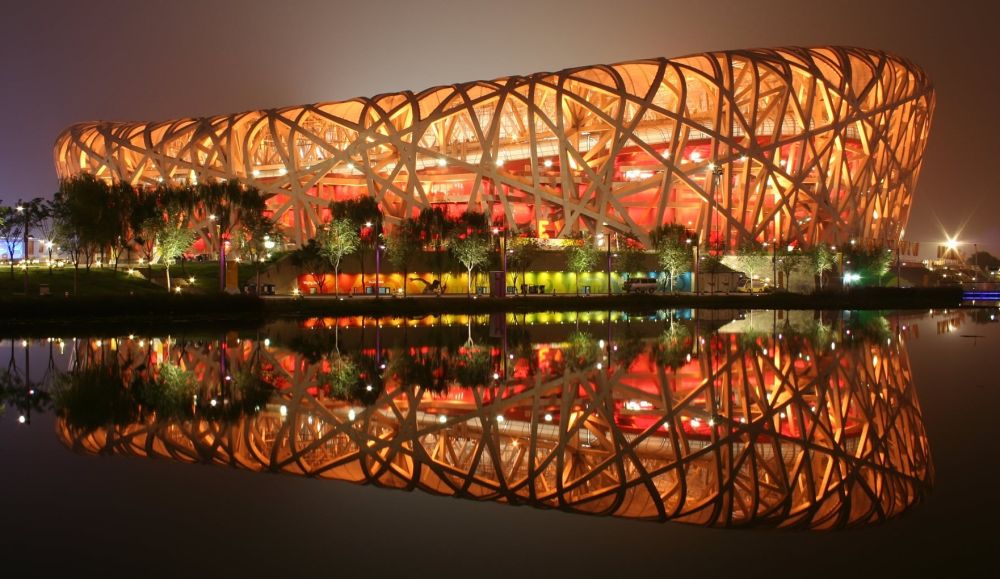

The Beijing National Stadium, colloquially known as the Bird's Nest, is not just a marvel of modern engineering but also a symbol of China's rapid growth and its ambition to position itself as a significant player on the global stage. With its unique and eye-catching design, the Bird's Nest has become an icon of contemporary architecture and a centerpiece for tourism in Beijing, China.
The construction of the Beijing National Stadium began in December 2003 and was a joint venture among multiple entities, including the architectural firms Herzog & de Meuron and ArupSport, and the China Architecture Design & Research Group. The goal was not only to create a structure for the upcoming 2008 Summer Olympics but also to build a venue that would inspire and attract visitors for years to come. The stadium's unique lattice structure, which resembles a bird's nest, was derived from the desire to create an open and welcoming design, symbolizing the hospitality of China.
The Olympic Games were a pivotal moment in the Bird's Nest's history. The stadium's completion cemented its status as an architectural wonder, and it drew international attention during the Olympics opening and closing ceremonies, as well as the athletic events it hosted, most notably the track and field competitions. The success of the Olympic Games marked the Bird's Nest as not just a stadium but also as a destination of historical significance.
Following the Olympics, the Bird's Nest transformed from an Olympic venue to a multi-purpose stadium, hosting a range of events from sporting matches to concerts. This shift ensured the stadium's continued use and relevance. Tourism has flourished, with the site becoming a must-see for visitors. Tourists can explore the stadium through guided tours that provide insights into its history, design, and legacy. The adjacent Olympic Park also serves as a leisure destination, further enhancing the area's appeal.
In recent years, the Bird’s Nest has adapted to new tourism trends. Embracing technology, there have been developments in virtual reality (VR) experiences that allow visitors to relive the excitement of the Olympics. Additionally, the area around the Bird's Nest has seen significant development, with shopping centers, restaurants, and entertainment venues enhancing the visitor experience. Eco-tourism has also been a growing focus, with the stadium boasting an eco-friendly design that conserves water and energy, making it an exemplar in sustainable tourism.
Today, the Beijing National Stadium continues to be one of the most photographed and celebrated landmarks in Beijing. With its resilience and adaptability, the Bird's Nest not only remains a pivotal reminder of the spectacular 2008 Olympics but also an enduring attraction that keeps pushing the boundaries of what a modern-day tourist hotspot can be.
For visitors wanting to experience the grandeur of the Bird's Nest, it is conveniently located in the city with ample accessibility through public transport. In addition to regular tours, the stadium often features seasonal events and exhibitions which amp up its tourism value. The legacy of the stadium, coupled with the immersive experiences on offer and its remarkable architecture, ensures that the Beijing National Stadium will remain a key destination for tourists exploring Beijing's rich blend of history, culture, and modernity.